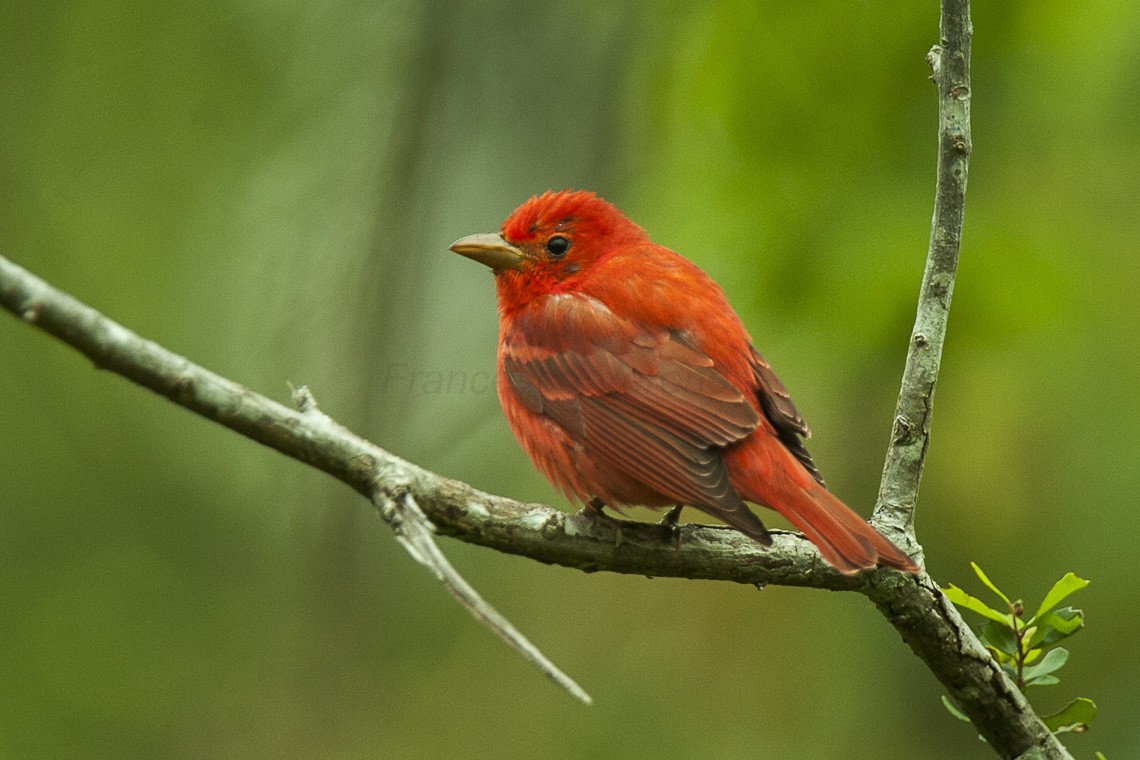Summer Tanager
A species of Northern Tanagers Scientific name : Piranga rubra Genus : Northern Tanagers
Summer Tanager, A species of Northern Tanagers
Botanical name: Piranga rubra
Genus: Northern Tanagers
Content
Description People often ask General Info
 Photo By Francesco Veronesi , used under CC-BY-SA-2.0 /Cropped and compressed from original
Photo By Francesco Veronesi , used under CC-BY-SA-2.0 /Cropped and compressed from original Description
The brightly-colored, tiny summer Tanagers living in the east build flimsy, ragged nests that seem barely thick enough to protect their eggs, while their western brethren build sturdier nests, and no one knows why. The summer Tanager likes to eat bees and will typically catch one in midflight, beat the bee against a branch, remove its stinger, and gobble it up for lunch just like that.
Size
17 cm
Life Expectancy
5 years
Nest Placement
Tree
Clutch Size
3 - 4 eggs
Incubation Period
1 - 2 broods
Number of Broods
11 - 12 days
Nestling Period
8 - 12 days
Feeding Habits
Summer Tanager primarily consume bees and wasps across their habitats, supplementing their diet with various invertebrates and fruits such as mulberries and blackberries. They exhibit flycatching behavior, sallying to catch insects and also forage in trees for berries and fruit, adaptable to human-altered environments.
Habitat
Summer Tanager are commonly found in open wooded areas, particularly favoring oak-inclusive forests across the southern United States, extending up to Iowa. These birds thrive in a variety of environmental conditions including deciduous or pine-oak forests, low-elevation willow and cottonwood woodlands, and higher-elevation mesquite and saltcedar stands. During migration, summer Tanager utilize similar habitats as well as parks, gardens, and beach ridges. In their winter range, they occupy open and second-growth habitats throughout southern Mexico, Central America, and northern South America.
Nest Behavior
The female summer Tanager single-handedly gathers materials and constructs the nest, with possible male accompaniment.
Nest Characteristics
Summer Tanager's nest is typically located in leaf clusters or branch forks, often above roads or creeks. The nest is a crude cup woven from dried grasses, around 3.5 inches wide and 2 inches tall externally, with a 1-inch deep and 3-inch wide inner cavity.
Dite type
Insectivorous
People often ask
General Info
Feeding Habits
Bird food type
Bird Feeder Type

Platform
Sounds
Call
Recording location: Mexico
Call
Recording location: Panama
Song
Recording location: United States
Behavior
Summer Tanager exhibit a clear pattern of monogamy within their breeding season, which involves males establishing territorial boundaries through song and pursuit. Female solitary incubation is contrasted by the males' foraging and self-care habits, with occasional paternal provisioning. Post-hatching, biparental feeding commitments arise. Fledglings depend on parental support for several weeks, utilizing dense vegetation for concealment and sustenance. Summer Tanager address brood parasitism through vigorous defense against cowbirds. In non-breeding periods, their behavior shifts to a solitary nature, with exceptions during occasional joint foraging movements in winter assemblages.
Scientific Classification
Phylum
Chordates Class
Birds Order
Perching birds Family
Cardinals Genus
Northern Tanagers Species
Summer Tanager